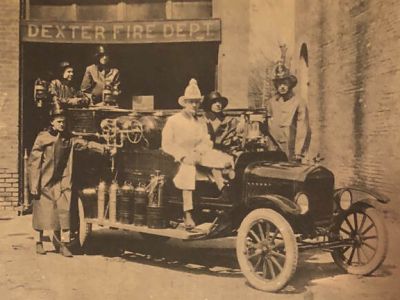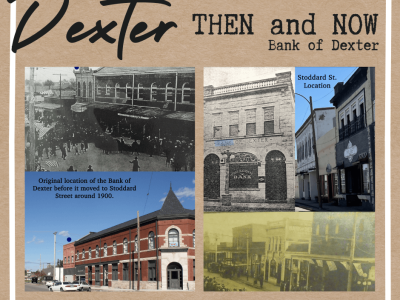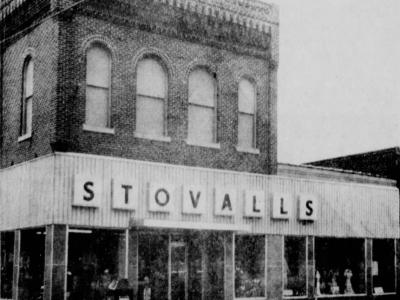A Bright Future & A Proud Past
The Original Town of Dexter
Dexter and the surrounding area are rich in history from the early 1800’s to the present.
Dexter was planned by the Cairo, Arkansas and Texas Railroad Company, also known as the CAT Line (Cairo to Arkansas with the dream of going to Texas). The streets were named by the railroad company. They followed the usual pattern by naming streets for trees. Walnut Street was the central north-south street with Locust, Elm and Poplar to the east and Mulberry, Sassafras and Catalpa to the west. North Main was north of the railroad and South Main was south of the railroad. The next street south was Stoddard. The person who mapped the town had anticipated the town would move north. After North Main, came Market Street, Castor Street, then St. Francois Avenue. These streets have retained their names with few changes. One Mile Road is supposed to be one mile from the center of Walnut Street, the center street of the original town, Two Mile, Three Mile, etc.
Sharing Dexter’s History
Compiled by Revalee Minton
The original map of the town of Dexter was filed in St. Louis County in 1873 by Thomas Allen, president of the Cairo, Arkansas and Texas Railroad Company. However, many settlements in the area already existed. After the Louisiana Purchase and the Lewis and Clark Expedition, land was surveyed and An Act of Congress of the 24th of April 1820 entitled “An act making provision for the sale of public lands” was passed.
Jackson, Missouri, was the location of the Register of the Land Office for this area. James Dowdy (father of Sibble Dowdy Crytes) purchased 40 acres Certificate #8334 in 1843 and 120 acres Certificate #14460 in 1853. These are recorded in Book 25, pages 597-598 Stoddard County Land Records. Ridgetop Acres are part of these lands. Those who are interested in genealogy may want to check Book 21 page 568 Stoddard County Land Records. Many of the heirs played an important role in Dexter’s history.
The heirs sold the 120 acres to Albert A. Jorndt in 1897. By 1898 Mr. Jorndt had made his name known as the owner of fine horses. The December 1, 1898 edition of the Dexter Messenger: “Dexter has come to be considered the home of fine horses, and the reputation is a merited one.” Mr. Jorndt’s horse, Brown Pilot, is described “This noble pacing stallion has a reputation and hundreds of admirers in this state and adjoining states.”
This interested me since Mr. C. R. Trotter was a major participant in forming The Dexter Heritage Association in addition to being involved in plating and naming the streets in Ridgetop Acres Block One. I just took for granted that he had named Trotter Lane for himself until I realized his historical interest. Now when you go to the Dexter Public Schools or travel on Brown Pilot Lane, Saddle Spur Road, Trotter Lane and Bridle Road, be reminded that over a century ago, this was the home for many horses grazing in pastures one mile from the center of the original town of Dexter.









